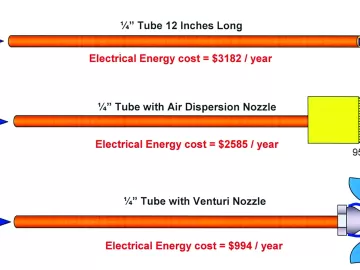Control Panel Cooling Change Saves Compressed Air Electrical Costs
As a result of compressed air awareness training and a focus on energy management, two facilities in different parts of the world have reduced their compressed air demand substantially by removing vortex style cabinet coolers from some of their electrical panels and reworking the cooling systems. These facilities were previously unaware of the high cost of compressed air and how much could be saved if other methods of cooling were used. This article describes some of their efforts in demand reduction.












